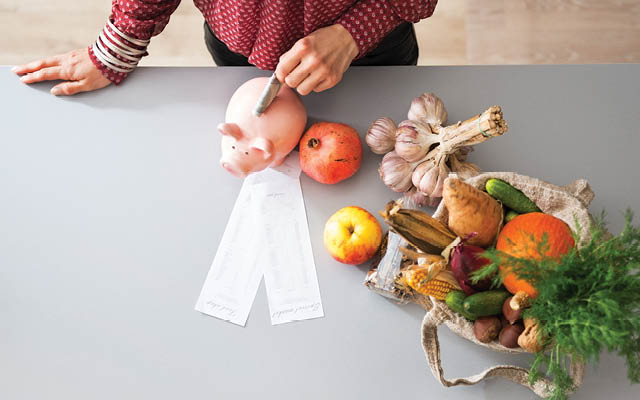1. Eat Whole Foods, Organic When Possible
“Breaking free of the grip of processed food is a must if you want to claim and own your health,” advises Lipman. Processed foods containing sugar, high-fructose corn syrup, artificial sweeteners and flavors, preservatives, and unhealthy fats have been linked to type 2 diabetes, cancer, and heart disease.
By contrast, organic, non-GMO vegetables and fruits offer essential fiber, vitamins, minerals, and phytonutrients our bodies need to thrive.
When selecting whole foods — especially produce — opt for organic varieties whenever possible. Pesticides and other agricultural chemicals can be hazardous to both physical and cognitive health. Each year, the Environmental Working Group publishes the Dirty Dozen, a helpful list of the most pesticide-heavy produce, which includes strawberries, apples, spinach, kale, potatoes, and more.
Eating clean becomes more important when you eat high on the food chain, says Lipman, noting that antibiotics, hormones, and pesticides tend to concentrate in conventionally farmed meat, poultry, dairy, and eggs. Though organic foods are often more expensive than their conventionally grown counterparts, think of them as an investment in your health that may help avoid costly medical bills down the road.
Try joining a local CSA (community-supported agriculture) group for locally grown, organic produce, or look into services — such as Imperfect Produce — that deliver affordable, organic, cosmetically marred but nutritionally robust produce right to your door.
2. Get Bodywork
Massage and hands-on healing techniques energize and rejuvenate us, increasing our sense of well-being while easing stress, says Sheila Patel, MD, chief medical officer for Chopra Global.
“Massage is a very underutilized tool for pain management,” she explains, noting that it can stimulate the release of mood-enhancing neurotransmitters, improve circulation to the muscles and connective tissue, and encourage lymphatic flow and drainage. Studies have demonstrated that it can also reduce stress, pain, and muscle tension. “In addition,” Patel notes, “Ayurvedic massage that incorporates energy work and acupressure can help optimize the body’s internal communication via nerve signals, create energy flow, and enhance immunity.”
To enjoy the benefits of massage in a budget-friendly way, try reaching out to a massage school, where students often offer discounted rates. Or take advantage of DIY approaches, such as foam rollers or Ayurvedic self-massage. (For more on becoming your own massage therapist, see “Be Your Own Massage Therapist”.)
3. Buy the Right Gear
Investing in the proper equipment for your chosen activity will make you more likely to participate and less likely to suffer avoidable injuries. Choosing the best shoes, for example, is a must. You’ll also be more likely to ride your bike on your morning commute if it fits you properly, rides smoothly, and is equipped with lights and a rack. Purchase a sturdy helmet that’s comfortable to wear. And for those days when you can’t make it to the health club or gym, get the best set of kettlebells you can afford so you can maintain your strength-training routine at home.
In short, if you invest in the appropriate gear, you’re likely to use it a whole lot more. (To check out the library of how-to workout videos from Experience Life, visit www.experiencelife.lifetime.life/videos.)
4. Check Out Complementary and Alternative Medicine
Conventional Western medicine leans heavily on costly pharmaceuticals, but many traditional healing modalities have incorporated herbs and nondrug therapies — considerably more affordable —— for thousands of years.
“Supporting the body with gentle herbs can be very effective, with fewer side effects than many medications,” says Patel. If you have a complex medical history or are already taking prescription meds, consult with a professional before adding herbs. But if you’re seeking gentle support for better sleep or easing stress, try an adaptogenic herb on your own. (For more on herbal anxiety relief, see “Herbs for Anxiety”.)
“The beauty of herbs is that they’re supportive, not suppressing — they encourage our natural mechanisms for sleep, calming, and healing,” she says, noting that herbs are most effective when used in combination with lifestyle practices, such as healthy eating, meditation, and yoga.
Other complementary approaches, such as acupuncture and reiki, may also help manage pain and address chronic issues like insomnia and depression. Look into community acupuncture (services provided in a group setting, often on a sliding scale) for a more affordable option.




This Post Has 0 Comments